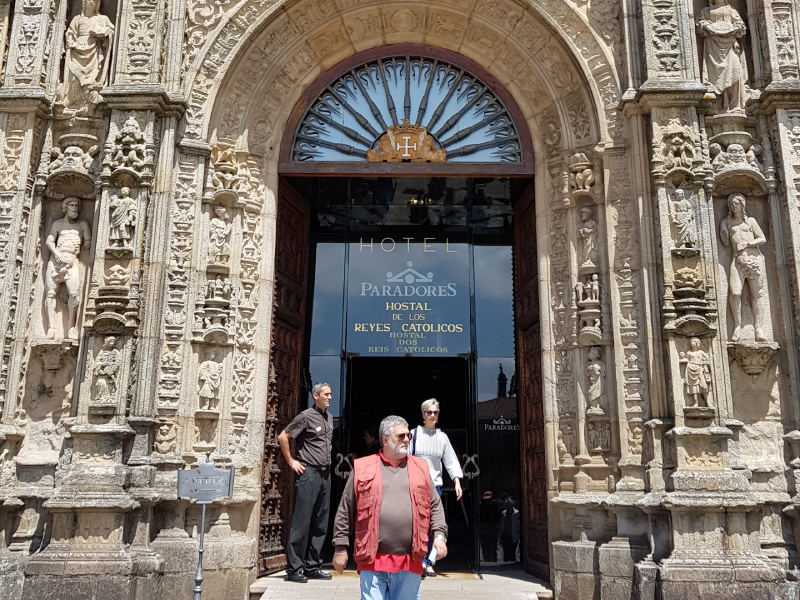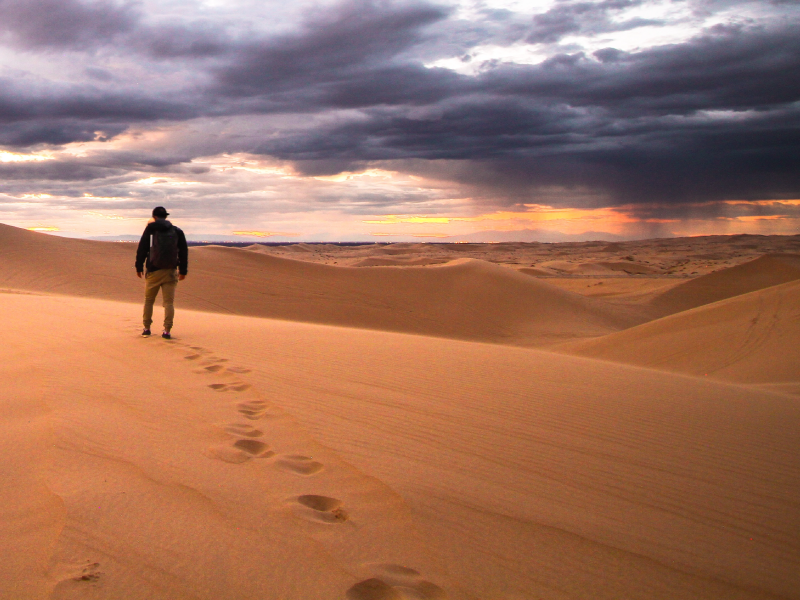Life is a Journey… Travel Well
By Dr Noreen Chan
Head & Senior Consultant, Division of Palliative Care
National University Cancer Institute, Singapore (NCIS)
This issue’s topic was originally meant to be “The Good Death”, but along the way I realised that it does not make sense to talk about a good death, without first exploring what it means to live a good life. Few things shake up one’s perspective like the diagnosis of a serious illness, or that death is approaching faster than one thought. I will explore the Good Death theme in a future essay, but for now let us consider what comes before.
On a recent trip in northern Spain, I had two insights that gave me a fresh perspective on my work in Palliative Medicine. We had ended our trip in Santiago de Compostela (literally, St James of the Field of Stars), a small town which grew up around the account of the apostle St James the Greater, whose relics are interred in the cathedral. For over a thousand years, pilgrims have made their way to Santiago along the Camino (literally, the Road or the Way), one of the most important pilgrimage routes in Europe.
In the last 10-15 years, the Camino has grown hugely in popularity – last year there were some 300,000 pilgrims – and nowadays people do it for many reasons, not only spiritual, but also cultural. Regardless of age, faith or social station, people make their way through France, Portugal, southern Spain or any number of starting points along a network, following routes that have been trodden for a millennium.
Our hotel right on the cathedral square, was a good place to see these determined individuals arriving on foot or bicycle, cheering, hugging one another, or crying. It is impossible not to be moved by these open displays of emotion, and even though official pilgrims (or peregrino as they are known locally) form less than 15% of the total number of visitors to Santiago, they are the lifeblood of this town.
Insight #1: We Need to Reclaim our Roots of Holistic Care
The Hostal dos Reis Catolicos or Hospital of the Catholic monarchs, is named for King Ferninand and Queen Isabella, who ordered this grand building constructed in 1501. It started out as more of a hostel, providing food and lodging for pilgrims who had completed the Way of St James. But since the arrivals were often sick, or simply battered and exhausted, the monks and other staff cared for their ailments as well.
Over time, it evolved various functions including an orphanage, and finally included a hospital. Although initially only pilgrims could receive treatment there, local townspeople were later allowed to be admitted. Finally, a modern hospital was built farther from the old town, and the Hostal became a luxury hotel.
The words hospice, hospital, hotel, hostel and hospitality share the same Latin root, hospes. The early hospitals of the Middle Ages in France, for example, were known as Hotel Dieu or hostel of God. The monks did not distinguish between providing protection and shelter, and what we know as “healthcare”. Neither did they distinguish between care of the mind and body, and care of the spirit. Those wayfarers who could move on would do so, those who were destined to end their journey there, would be cared for until they died. At the Hostal, there is a room called “Observatory of the Dying” where those at the very close of life could have peace and privacy, much like the “Quiet Rooms” we nowadays have in some hospitals and hospices.
When the modern hospice concept evolved, it was in a way trying to reclaim this holistic approach to care, which we call person-centred or the bio-psycho-social-spiritual model, recognising that when we “hurt”, we do so in all aspects of our being.

One of the courtyards of Hostal dos Reis Catolicos.
Insight #2: We Are All On A Journey
A pilgrimage can be defined as a journey of deep personal significance, undertaken with specific goals. Most of us understand pilgrimages in the religious sense – to fulfil an obligation or for penitence – but there are also journeys made to pay homage. For example many in Palliative Medicine want to visit St Christopher’s Hospice (which the late Dame Cicely Saunders built), soccer fans may wish to visit Old Trafford… it does not matter except this act, this journey, means something to you.
And so it is with our life’s journey. Most of us “travel” with certain expectations of what we would like to happen, but things do not always go our way. Sometimes people feel it is ending too soon, for others it is taking too long, but whatever it is, that is our journey to make. If the end of our lives is a continuation of how we have lived our lives, then it should not come as a surprise that old habits die hard. The avoidant personalities tend to remain avoidant, the pragmatists are pragmatic, those who use humour to cope will crack jokes. The romantics may wish for an epiphany, where everything falls into place; sometimes it happens, but not often.
For most of us, we will press forward, doing the best we can through the ups and downs. Some of us will have companions, others prefer to go it alone. We may have some idea of what journey’s end will look like, although we can never be sure until we actually get there. People I know who have walked the Camino acknowledge the physical exertions, but they also speak of having to wrestle with their thoughts, emotions and memories, deal with their fears and doubts.
Perhaps that is the greatest insight of all. That the physicality of this journey is but an outer expression of the inner paths that we tread. All pilgrimages are ultimately journeys of the mind, heart and spirit. Those of us who have had the privilege of walking beside patients and families approaching the end of life, have borne witness to the struggles and despair, but also the joy and love. I see palliative care professionals as guides, offering support and guidance; we cannot walk the journey for our patients; neither can we judge the kind of path they have chosen to travel. This life journey started long before we met them, we are only companions for this part. I can share my expertise and experience with you, but the journey is yours to make.
We all are on a pilgrimage, whether we know it or not. No one person’s Way will be the same as another, each person will trace their own route. Whatever it is, we all hope it will be a good journey, and an authentic one. That is why pilgrims and well-wishers use the greeting “Buen Camino” (Good Way), because every life journey is special. What will yours look like?
“All pilgrimages are ultimately journeys of the mind, heart and spirit.”

The front entrance of Hostal dos Reis Catolicos, Spain.

Caminante, son tus huellas
el camino y nada más;
caminante, no hay camino,
se hace camino al andar.
Al andar se hace camino,
y al volver la vista atrás
se ve la senda que nunca
se ha de volver a pisar.
Caminante, no hay camino,
sino estelas en la mar.
Wanderer, your footsteps are
the road and nothing more;
wanderer, there is no road,
the road is made by walking.
Walking makes the road,
and turning to look behind
you see the path that you
will never tread again.
Wanderer, there is no road,
only foam trails on the sea.
from “Proverbios y cantares”
in Campos de Castilla, 1912
By Antonio Machados (1875-1939)
